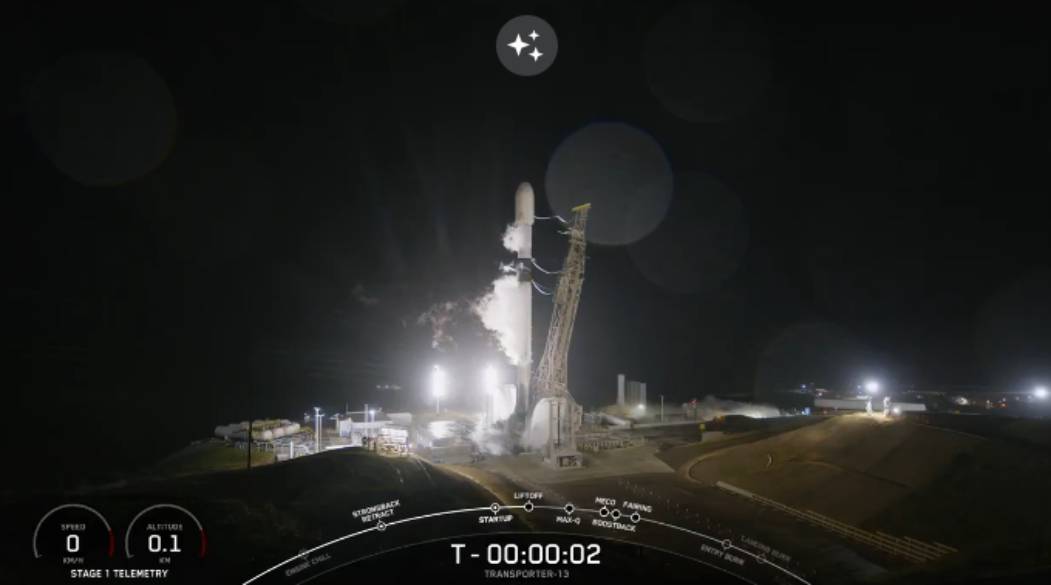Etihad-SAT: UAE’s first SAR satellite begins space mission (VIDEO)
The satellite enables all-weather, high-resolution Earth observation, day and night

DUBAI: The UAE’s first Synthetic Aperture Radar (SAR) satellite, Etihad-SAT, successfully lifted off today aboard SpaceX’s Falcon 9 rocket from Vandenberg Space Force Base in California.
The launch, initially scheduled for 10:39 AM, was slightly delayed to 10:43 AM before the rocket ascended, carrying the 220kg satellite into low Earth orbit at approximately 500km altitude.
This marks a groundbreaking moment for the UAE’s space programme and a significant achievement for the Mohammed Bin Rashid Space Centre (MBRSC). The launch also represents the second satellite deployment by the UAE in just three months, underscoring the nation’s expanding footprint in space exploration.
Liftoff! The Falcon 9 rocket, carrying the SAR satellite Etihad-SAT, has launched.#EtihadSAT pic.twitter.com/OHmVop0NsI
— MBR Space Centre (@MBRSpaceCentre) March 15, 2025
Etihad-SAT
Etihad-SAT is designed for high-precision Earth observation under all weather conditions, 24/7. Unlike traditional optical satellites, which rely on sunlight to capture images, SAR satellites like Etihad-SAT actively emit electromagnetic waves, enabling uninterrupted imaging regardless of darkness, cloud cover, or adverse weather.
The satellite operates in three distinct imaging modes:
- Spot Mode – Provides high-resolution imaging for small targeted areas.
- Scan Mode – Captures wide-area images for large-scale monitoring.
- Strip Mode – Offers extended observations along a continuous strip of land.
This cutting-edge technology makes the satellite invaluable for various applications, from tracking oil spills and monitoring environmental changes to aiding in maritime navigation and disaster response.
MBRSC’s key role
The development of Etihad-SAT was a collaborative effort between the UAE and South Korea’s Satrec Initiative. MBRSC engineers led the project from the initial technical specifications phase to final manufacturing, ensuring compliance with global industry standards. The data collected by the satellite will be processed using artificial intelligence, further enhancing its analytical capabilities.
In a statement last month, His Highness Sheikh Hamdan bin Mohammed bin Rashid Al Maktoum, Dubai's Crown Prince and the UAE’s Deputy Prime Minister and Defence Minister, hailed the project as a critical step towards positioning the country at the forefront of space exploration. He highlighted the role of Emirati youth in driving technological advancements and reaffirmed the UAE’s commitment to pushing the boundaries of innovation.
A milestone in UAE’s space journey
The launch of Etihad-SAT is a continuation of the UAE’s rapid advancements in the space sector. The nation has previously launched optical satellites and entered the SAR domain in 2024, further diversifying its satellite fleet. While optical satellites rely on sunlight to capture data, SAR satellites like Etihad-SAT provide superior detail by actively transmitting radar signals, making them more effective for mapping and terrain analysis.
Shortly after liftoff, the SpaceX Falcon 9’s first-stage booster successfully returned to Earth, marking the 400th successful booster landing for the company. The momentous event was accompanied by a brief sonic boom before the booster touched down, further cementing SpaceX’s reliability in satellite launches.